32 Types of Hammers for Every Project & Profession
Author: Chris Miller | Editor: Omar Alonso
Review & Research: Jen Worst & Chris Miller
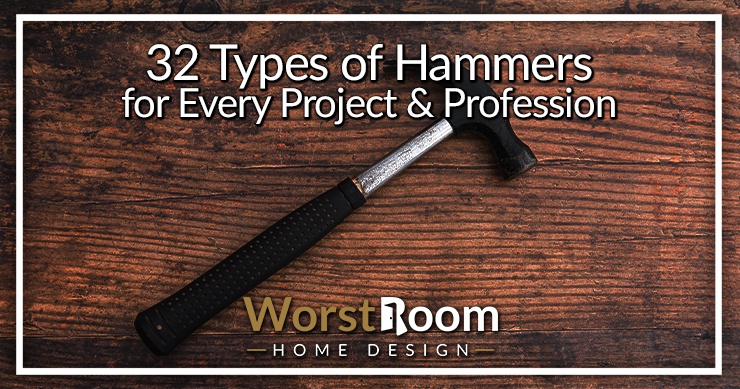
From carpentry to masonry to welding to DIY projects, the different types of hammers are an essential component—understandably, they hit the nail on the head every single time, whatever the task (pun totally intended!).
Most of us tend to think that all hammers are built equally—their sole purpose is to hit things, right? Wrong. There is an astounding array of hammers out there, each type built for its own purpose.
32 Types of Hammers
Whether you’re looking to add more hammers to your repair artillery or Mjolnir has sparked a fascination/obsession with how many hammers could possibly exist, this guide to the different types of hammers has you covered.
Claw Hammers
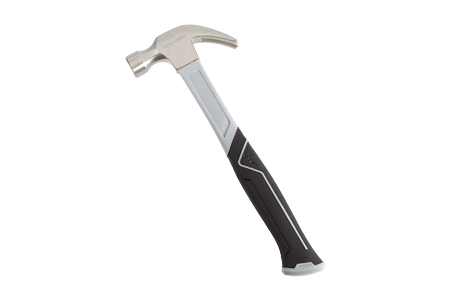
Claw hammers are the most common of the hammer world—they’re everywhere. The most recognizable hammers in the world, these hammers feature a forked, curved claw to grip nail heads easily, making them great for prying out nails.
This also makes them equally great at levering up floorboards and other objects. These hammers are also great for woodwork, interior design, carpentry and home improvement, making them quite a versatile tool to have in any toolkit.
Between 16 and 24 ounces, these hammers are lightweight, featuring steel, wooden, or glass-fiber handles and possibly a rubber grip. Understanding what weight of hammer to buy is crucial. Too heavy and you'll tire out. Too light and you won't have enough driving force.
Framing Hammers
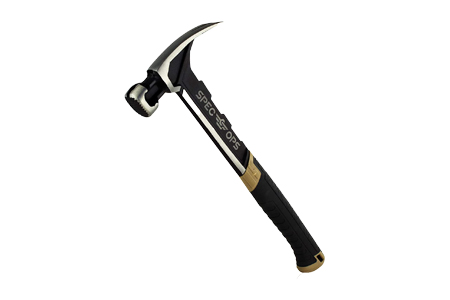
Framing hammers, also known as rip hammers, bear a very close resemblance to their clawed cousins but are longer and heavier.
These hammers get their name from their main function—assembling house frames—and feature waffled heads or straight claws.
Waffled heads help prevent any slipping when you’re driving in nails; however, this can damage the surrounding wood.
This damage is only superficial and surface level, though, so it can be covered when the house is finished. These hammers are also great for splitting and demolishing small objects (stress buster much?).
Ball Peen Hammers
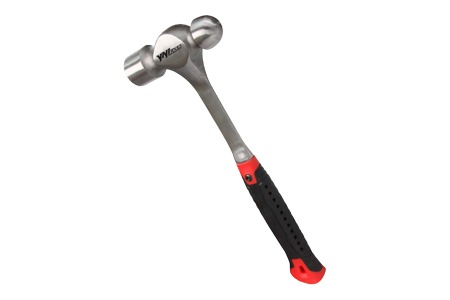
Also called mechanic’s or engineer’s hammer, ball peen hammers (also spelled pein), were used for peening (hence, the name)—a metal fabrication process, where a metal surface is hardened by repeatedly beating it, that’s mostly obsolete today.
Peen types of hammers are used to round the edges of fasteners and metal pins, shaping metal and closing rivets.
Ball peen hammers range in weight from 4 ounces up to 2 lb and feature handles made of wood—generally hickory, like most hammers, or ash. Of late, though, materials that suppress the vibration while pounding are gaining popularity.
Club Hammers
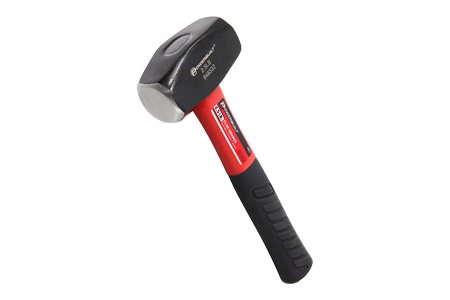
Club hammers are the little brothers of sledge hammers but in size only—don’t dismiss their power based on their size.
Also known as lump hammers or drilling hammers, these tools have double-faced heads like their older brothers, making them suited to light demolition and driving in masonry heads and steel chisels.
Despite their power, these hammers feature wooden or resin handles and only weigh between 2.5 and 4.5 lb and are not meant for commercial usage. Pro tip—always gear up—goggles, gloves and all—when you use these hammers.
Sledge Hammers
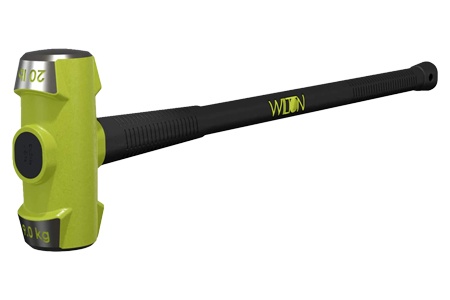
If you’re pulling out a sledge hammer, you’re pulling out the big gun. These hammers, with their long handles and double-faced heads, are designed to break things apart with their large, heavy blows, making them great for demolishing masonry, stone and concrete and driving in stakes.
The long handles aren’t just for aesthetic appeal—these handles provide momentum, which when coupled with the head’s weight, provide incredible hitting power and force.
Sledge hammers are also used by blacksmiths to straighten or flatten iron bars and round rods. These hammers can weigh anywhere between 7 and 14 lb.
Deadblow Hammers
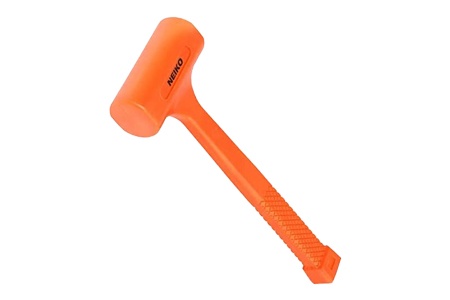
A variation of sledge hammers, these hammers are specially designed to prevent recoil and give soft blows without any compromise on power.
This is accomplished by a head made of solid rubber or plastic or having a head with an internal steel-or-lead-filled cavity.
The above arrangement prevents the target surface from getting damaged while ensuring that there is still maximum impact power.
Hence, deadblow types of hammers are quite versatile and can be used in applications ranging from automotive to woodworking to anything that requires repairing dents, moving parts or knocking wood apart/together.
Straight Peen Hammer
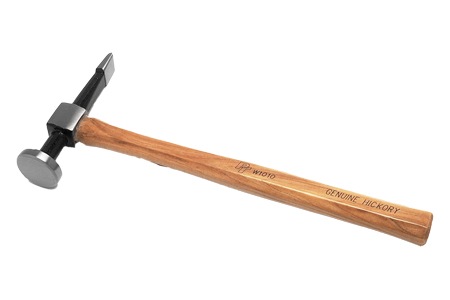
Straight and cross peen hammers are both designed to shape metal, just like ball peen hammers. These are common features in blacksmiths’ shops or places where wrought iron needs to be turned into an ornate product.
Depending on whether the end of the head face is parallel or perpendicular (resulting in a wedge shape) to the handle, these hammers are identified as straight or cross peen.
The flat head on the other side is used to forge metal, which means that these hammers can be used for striking, riveting and forging, in domestic settings.
Cross Peen Hammer
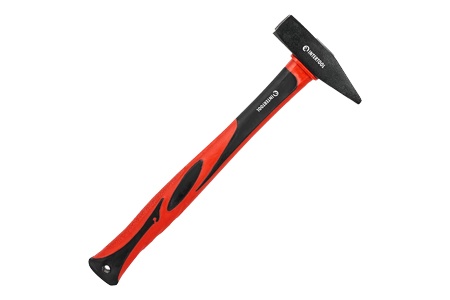
The cross peen hammer is also great for starting off any types of nails — you can easily hit the head of a small nail or tack while holding it in between your fingers without having to sacrifice them.
Cross and straight peen hammers weigh around 4 ounces, offering more comfort than their ball cousins.
Joiner's Mallet
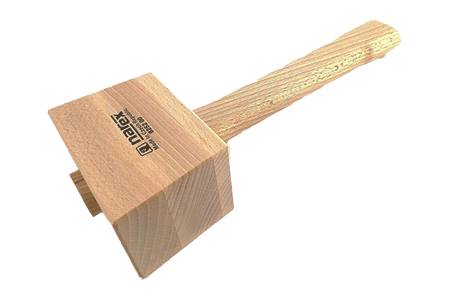
Mallets are used to tap together wooden joints, knock in dowels, or drive in/hit chisels. These hammers comprise wooden blocks parked atop a handle and are quite an important tool in the toolbox of carpenters and joiners.
Mallets are generally made of hardwood such as beech and are the preferred option when you don’t want to damage a project, surface, or the other tools you’re using.
Mallets have heads that are slightly tapered to ensure that they come in correct contact with the intended surface.
Rubber Mallet
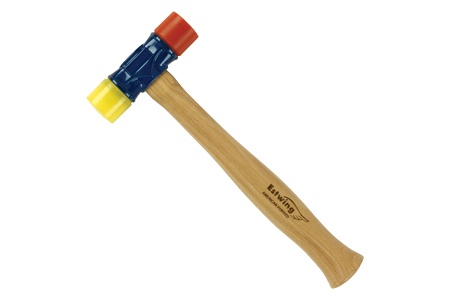
There are two main types of mallets—joiner’s mallets and rubber mallets. Joiner’s mallets are generally what folks refer to as just “mallets”, while rubber mallets have a rubber head, allowing softer blows.
These can be used in upholstery, on sheet metal, in woodworking and even to put plasterboard or drywall alternatives in place—it’s that soft.
Trim Hammers
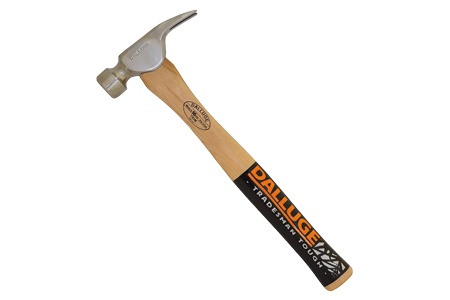
Trim hammers are shorter than claw hammers, featuring a straight claw and a smooth face that lets you easily drive in trim nails sans any damage to the surrounding surface—the fine texture and polished steelhead enable hitting without making any dents on the material’s surface.
Also known as finish hammers, trim types of hammers give you a nicer and more delicate finish than claw or nail hammers and are all kinds of lightweight and compact.
Tack Hammers
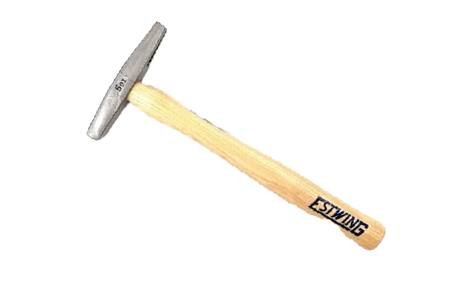
Tack hammers are relatively rare in domestic usage. These feature claw-like heads on both ends, with one end magnetized.
This allows them to hold the tack in place and then drive in the tack with the non-magnetized face. Tack hammers are also called upholstery hammers, used for tacking pins into any types of upholstery fabric.
Scaling Hammers
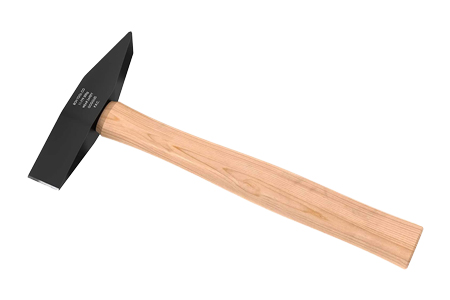
Scaling hammers consist of a vertical chisel, a normal head and picks and are used to remove hardened coats from surfaces such as rust and scale.
Drywall Hammers
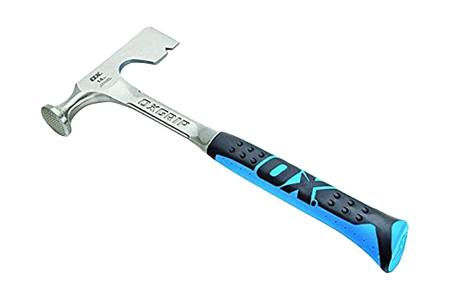
A drywall hammer is used to hammer in all types of drywall and remove nails. The unique aspect is the face has a grid on it and is rounded. Many will have a scoring tool on the back (instead of peen or claw parts of a hammer) which can help with cutting drywall to size.
This serves to help the hammer not slip from the head of the nail and reduces any dents or damage to the drywall, which needs to be perfect before painting.
Roofer's Hammer
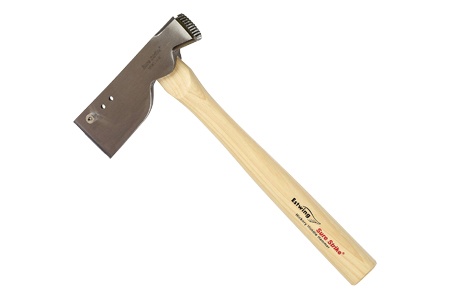
A roofer's or roofing hammer helps a person not only nail down shingles but to cut them to various sizes. They help make snipping cuts, long cuts, and of course, to tack down the shingles with nails.
Welding Hammers
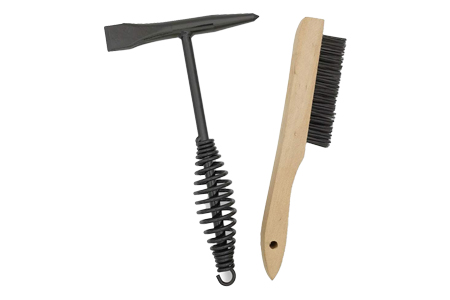
Welding hammers, also known as chipping hammers, feature a vertical peen on one end and a round chisel on the other.
The most striking feature of these types of hammers, though, is the unusual spiral-design ends that make them seem like springs.
This design helps in heat dissipation, whereas the hammer helps in removing slag, once the weld bead has cooled, from welding points.
Planishing Hammers
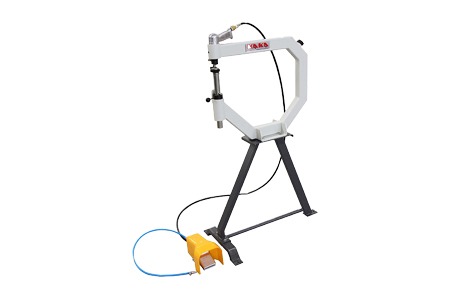
Planishing hammers are used to lubricate the metal and fix it while on the planking stake; this allows the metal to mold in the shape of the stakes. To aid in this, planishing hammer types feature a peen, a cylindrical die and a convex head.
Geologist Pick Hammer
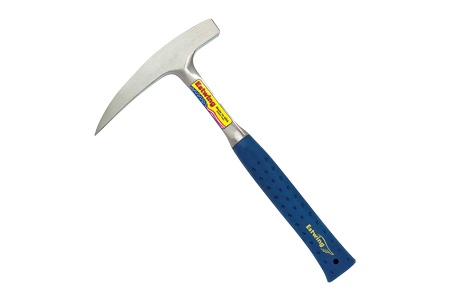
When out in the field, the geologist needs two tools: a pick and a hammer. A geologist pick hammer combines both onto either side of the head. These can be used to break apart rock, move dirt and sediment, or otherwise analyze minerals or uncover fossils. They're sometimes called a rock hammer.
Soft-Faced Hammers
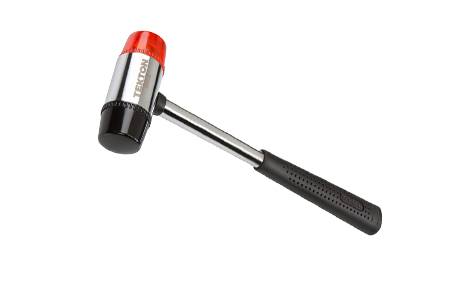
Though there are mallets that feature rubber heads and soft surfaces, there are specifically designed soft-faced hammers that can be used on aluminum, wood, brass, copper, plastic and bakelite without leaving any scars or dents.
To ensure this, these hammers, also known as ‘hide hammers’, feature caps made of nylon or plastic over both faces, covering the iron. Though these hammers can sometimes be heavy, their blows are extremely soft.
Chasing Hammer
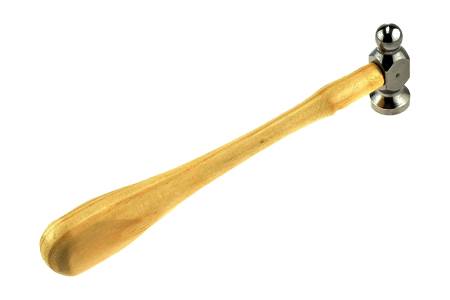
The chasing hammer has a small ball peen on one end and a thinner flat surface on the other. The handle is thin but features a bulb on the bottom. It's meant for use in manufacturing and repairing metal jewelry.
Brass Hammer
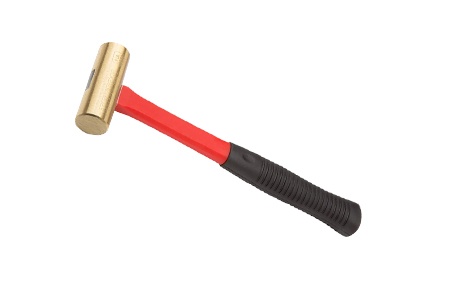
Brass hammers look much like a mallet but are made of brass. The head is a cylinder with two equally sized heads on either side. They're meant for driving in nails and pins into metal without damaging the surrounding surfaces, thanks to brass being softer than most other used materials.
Lineman's Hammer
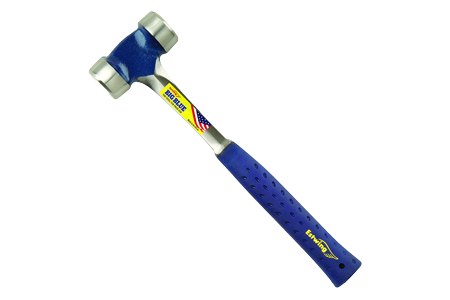
Used for driving in bolts or big lag screws, especially in work on telephone poles, Lineman hammer types have various designs, but all will feature an oversized head to aid in hammering in large pins in awkward positions.
Brick Hammer
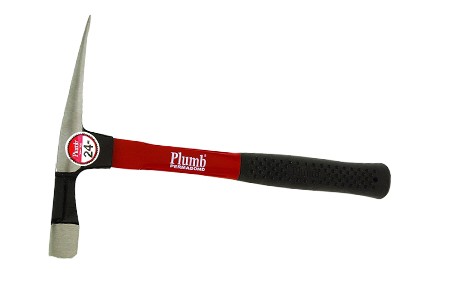
A brick hammer features a typical head used for driving in nails or pins, but what sets it apart from other types of hammers is the claw on the back, designed in a way to act as a chisel.
You can use it to score lines to help guide break lines. The chisel can then be used to break the brick. Sometimes it's called a masonry hammer.
Toolmaker's Hammer
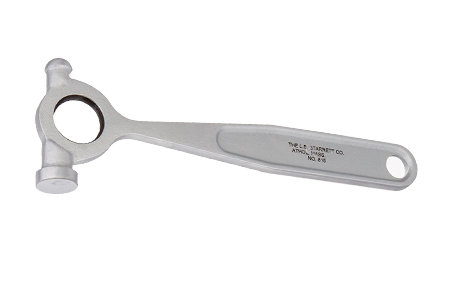
These hammers have both a ball peen and a round head. They're designed to be used in machine shops for delicate work that requires precision. This is why they feature a magnifying glass on them, and this is what makes them unique.
Hatchet Hammer
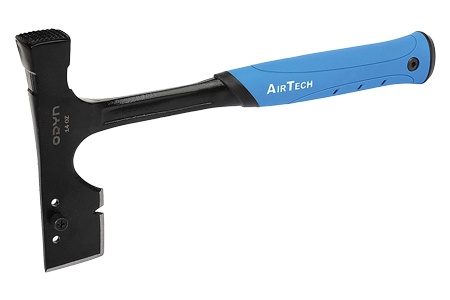
The hatchet hammer is basically a hatchet with a ball peen on the back. Or, said another way, it's a hammer with a driving head on one end and a hatchet on the other. These are wonderful survival tools and even fire pit tools.
Bushing Hammer
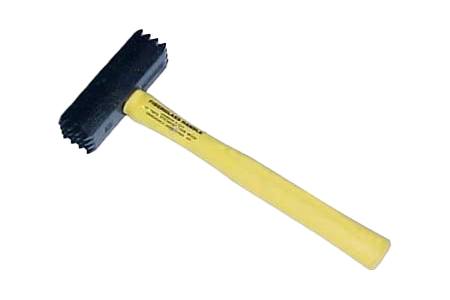
Shaped very much like a cylindrical mallet, but instead of a cylinder it's an extended rectangle. And instead of flat heads, the heads feature spikes much like a meat tenderizer.
They're used to create textures on surfaces by roughing them up with scoring and dents. This often helps increase friction, especially on sidewalks.
Electrician's Hammer
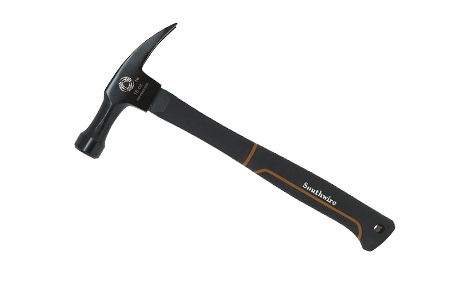
The electrician hammer types are very similar to a claw hammer, with the only difference being that the side with the striking surface has an extended length to help the electrician reach into restricted areas where that little bit of extra length makes all the difference.
Piton Hammer
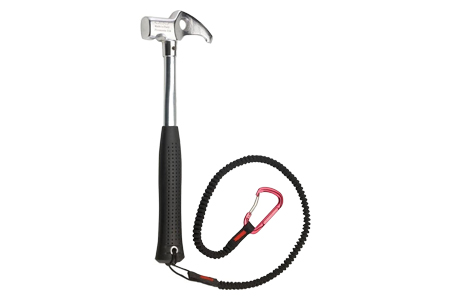
A piton hammer is used in rock climbing and is sometimes called a rock climbing hammer. It's used to drive and remove pitons from the rock face. One side of the head will feature a broad, anvil shaped head to drive the pitons.
The other side features a hole and an extended claw to help gain leverage for removing pitons from the rock face. They're constructed as light as possible, often hollow in the handle, to reduce weight when climbing.
Power Hammers
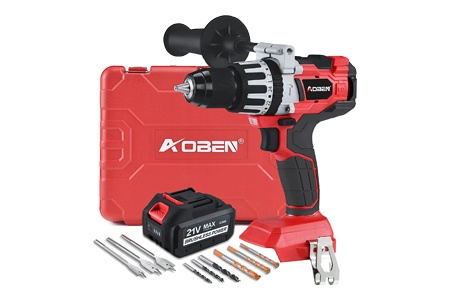
Power hammers belong in blacksmith workshops and other commercial settings, where they do heavy-duty jobs like bending and forging.
These are not actually types of hammers in the strictest sense; they’re heavy machines and can be pneumatic or electric. With a little effort using these heavy hammers, you’ll be saving yourself a ton of time.
Scutch Hammers
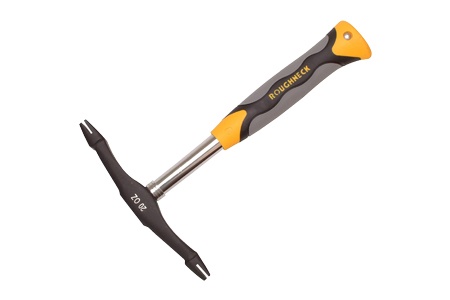
A scutch hammer is interesting in that it doesn't have a platformed face to use blunt force to hammer an item. It has blade-shaped ends used to place precise force in a horizontal stripe in order to split masonry and bricks, much like the types of chisels out there do.
Blocking Hammers
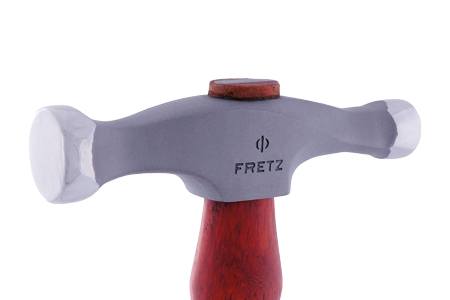
A blocking hammer is used by a person fashioning sheet metal. In order to flatten it into a pristine and blemish-less state, it needs to be planished (flattened). This can be done with rollers or by hand using a blocking hammer.
Nail Guns
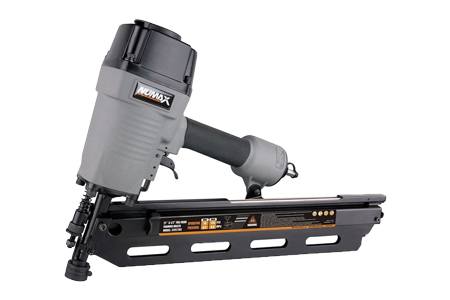
While these are pneumatic and don't require swinging (but add complication by requiring air compressors and air tubes), they can help you complete a repetitive task quickly. They have a magazine that holds a clip of nails so you can quickly place as many as 30 or more nails or tacks.
Types of Hammers for Every Task
As you can see, the hammer-verse could quite comfortably give the Marvel Universe a run for its money. The many hammers out there, with their specific uses, make a range of tasks easier, saving a ton of time in the process.
One thing remains constant, though, whatever different types of hammers you’re using—stay safe. Ensure that you’re wearing all the protective gear necessary so that it’s only the nail on the wall that you’re hitting and not your own.



